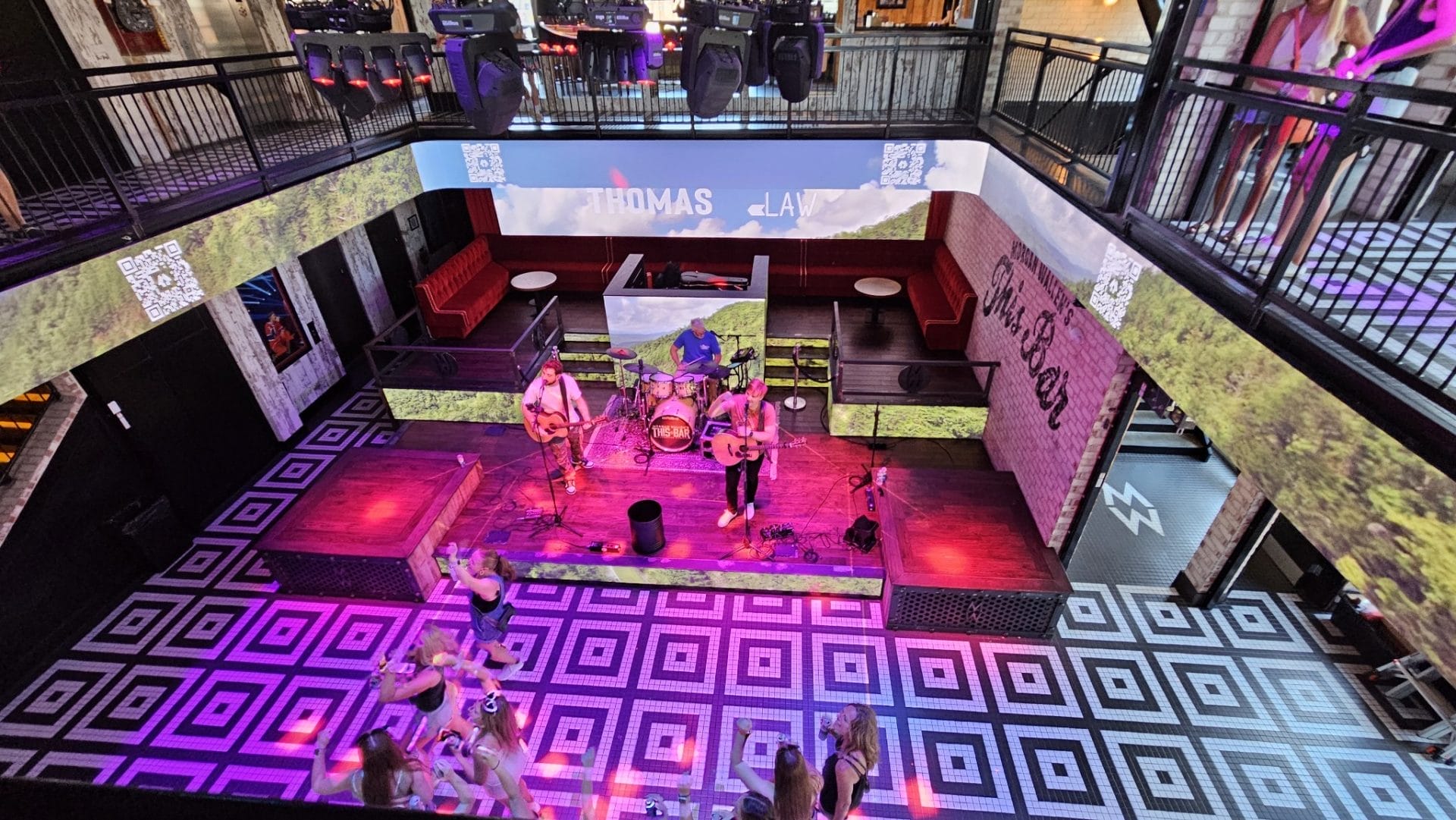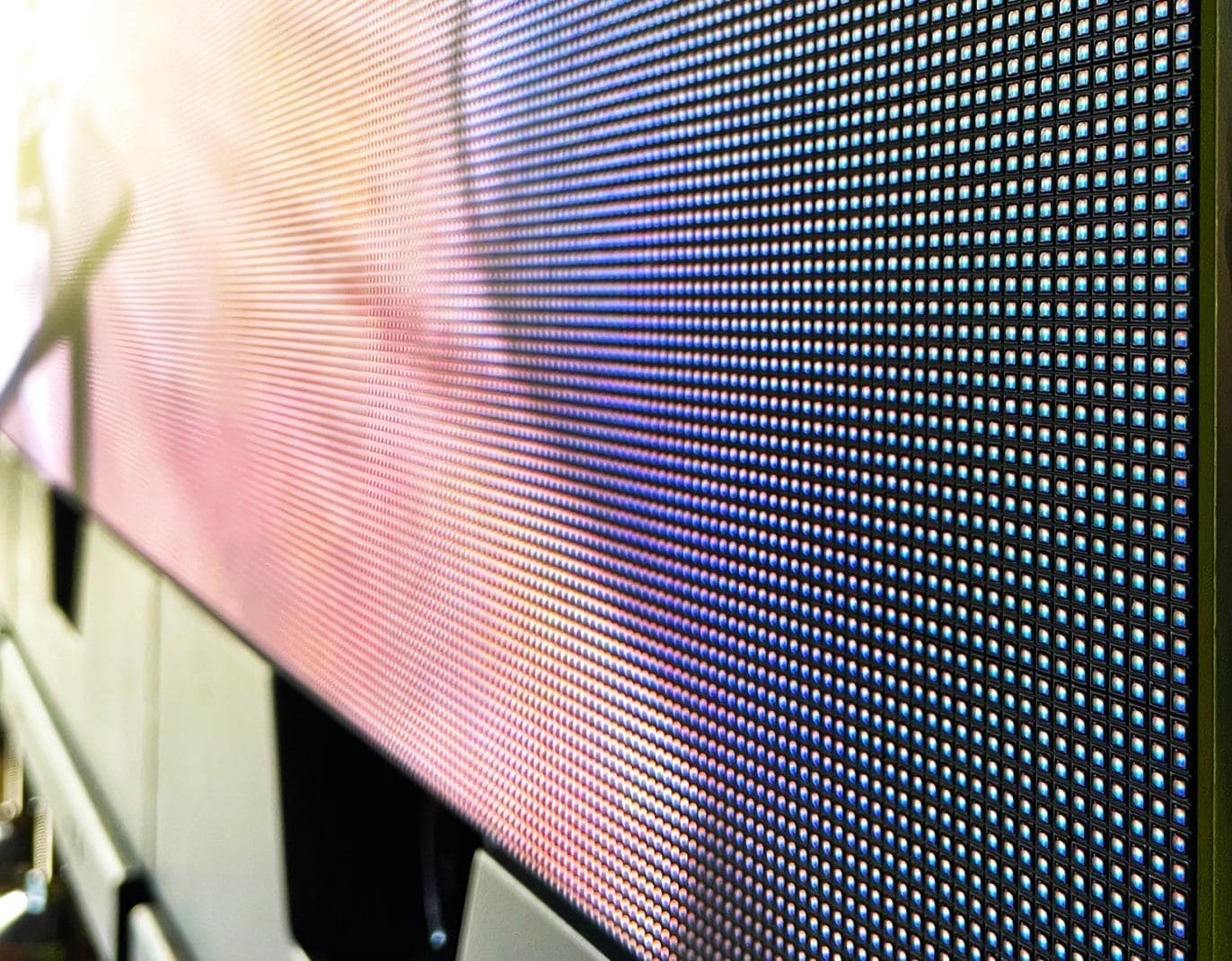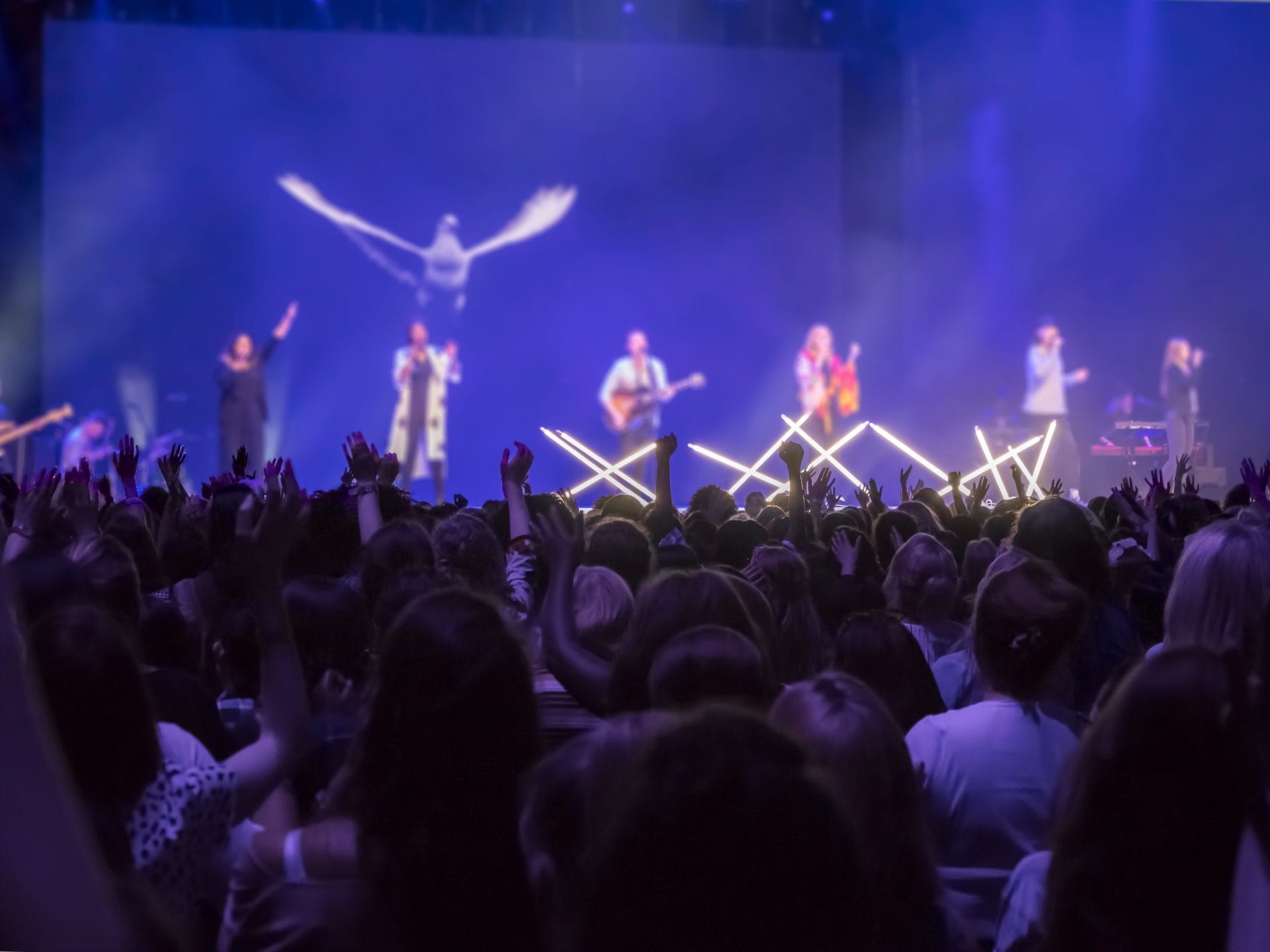FAQs on LED Basics
What is an LED display?
In it’s simplest form, an LED Display is a flat panel made up of tiny red, green and blue LED diodes to visually represent a digital video picture. LED displays are used around the world in various forms, such as billboards, at concerts, in airports, wayfinding, house of worship, retail signage, and so much more.
How long does an LED display last?
Compared to the lifespan of an LCD screen at 40-50,000 hours, an LED display is made to last 100,000 hours — doubling the life of the screen. This can slightly vary based on usage and how well your display is maintained.
Read more about this topic and how to help your screen last longer.
How do I send content to the display?
When it comes to controlling the content on your LED display, it’s really no different than your TV. You utilize the sending controller, connected by various inputs like HDMI, DVI, etc., and plug in whatever device you want to use to send content via the controller.
This can be an Amazon Fire stick, your laptop, or even a USB. It’s incredibly simple to use and function, as it’s technology you’re already using everyday.
What makes an LED display mobile vs permanent?
It’s important to know if you’re doing a permanent install, where you will not be moving or disassembling your LED display. A permanent LED panel will have a more enclosed back, whereas a mobile display is quite the opposite. A mobile LED screen has a more open-back cabinet with exposed wires and mechanics. This allows for the ability to quickly access and change panels, as well as easier setup and tear down.
Additionally, a mobile display panel has features like quick locking mechanisms and integrated handles for carrying, which is perfect for trade show displays.
FAQs on LED Technology
What is a pixel pitch?
As it pertains to LED technology, a pixel is each individual LED. Each pixel has a number associated with the specific distance between each LED in millimeters — this is referred to as the pixel pitch. The lower the pixel pitch number is, the closer the LEDs are on the screen, creating higher pixel density and better screen resolution. The higher the pixel pitch, the further away the LEDs are, and therefore the lower the resolution.
What pixel pitch you use for an LED display is determined based on location, indoor/outdoor, and viewing distance.
What are nits?
A nit is the unit of measure for determining the brightness of a screen, TV, laptop, and similar. Essentially, the larger the number of nits, the brighter the display is. The average number of nits for an LED display vary — indoor LEDs are 1000 nits or brighter, whereas outdoor LED starts at 4-5000 nits or brighter to compete with direct sunlight.
Historically, TVs were lucky to be 500 nits before the technology evolved — and as far as projectors are concerned, they are measured in lumens. In this case, lumens are not as bright as nits, therefore LED displays emit a much higher quality picture.
Something to think about when deciding on your screen resolution with consideration to brightness, the lower the resolution of your LED display, the brighter you can get it. This is because as the diodes are further apart, which leaves room for using a larger diode that can increase the nits (or brightness).
What does common cathode mean?
Common cathode is an aspect of LED technology that is a more efficient way of delivering power to the LED diodes. Common cathode gives the ability to control the voltage to each color of the LED diode (Red, Green & Blue) individually so that you can create a more energy-efficient display, and also dissipate heat more evenly.
What is flip-chip?
Utilizing flip-chip technology is the most reliable method for bonding the chip to the board. It lowers the heat dissipation tremendously and, in turn, the LED is able to produce a brighter and more energy efficient display.
With flip-chip, you are eliminating the traditional wire connection and going with a wireless bonding method, which decreases the chances of failure greatly.
What is SMD?
SMD stands for Surface Mounted Diode — a widely used type of LED diode today. A SMD is an improvement in technology compared to Standard LED diodes in the sense that it’s mounted directly flat against the circuit board. Standard LEDs, on the other hand, require wire leads to hold them in place on the circuit board.
What is COB?
COB is an abbreviation for Chip On Board. This is a type of LED that is formed by bonding multiple LED chips to create a single module. The advantages to the COB technology is a brighter display with fewer components to deal with in the housing, which helps lower the heat generated and create a more energy efficient display overall.
How high of resolution do I need?
When it comes to the resolution of your LED display, it’s important to consider a few factors: the size, the viewing distance, and content.
Without noticing, you can easily exceed 4k or 8k resolution, which is unrealistic in delivering (and finding) content in that level of quality to begin with. You don’t want to exceed a certain resolution, because you won’t have the content or servers to drive it.
Therefore, if your LED signage or digital display is viewed closer up, you’ll want a lower pixel pitch to output a higher resolution. However, if your LED display is very large scale and not viewed up close, you can get away with a much higher pixel pitch and lower resolution and still have a great looking display.
What is the Energy Efficiency of LED Displays?
LED displays are highly energy-efficient, surpassing traditional technologies, such as LCDs. Their direct light emission and dynamic brightness adjustment contribute to lower power consumption, leading to reduced operating costs over the lifespan of the display.
At Firefly LED, we prioritize energy-efficient solutions, ensuring that our LED displays not only deliver stunning visuals but also do so with minimal impact on the environment and operational expenses.
How Does LED Display Resolution Impact Content Quality?
LED display resolution plays a crucial role in determining content quality. The resolution, measured by pixel pitch, influences image clarity and sharpness. A lower pixel pitch results in higher pixel density, delivering clearer visuals, especially at close viewing distances. Consider your specific application and viewer proximity when choosing a resolution; a well-matched pixel pitch ensures optimal content quality.
To learn more about Pixel Pitch, check out
Pixel Pitch Perfect | Firefly LED
FAQs on Firefly LED Products
I found a display cheaper at [company]. Why are your prices higher?
Just like most consumer goods, you’ll find a wide spectrum of pricing for anything—but you get what you pay for. At Firefly, we only use high-grade components, like flip-chip and patented armor coating—all aimed at providing a more reliable, well-made display. While it may appear apples-to-apples visually, when you dig deeper into the make of the LED panel you’ll notice the true difference.
How do I know what LED panel is best for me?
Deciding on what LED display solution is best for you depends on several factors. You need to first ask yourself — will this be installed indoors or outdoors? This, right off the bat, will narrow down your options.
From there, you need to figure out how large your LED video wall or signage will be, what kind of resolution, whether it will need to be mobile or permanent, and how it should be mounted.
Once you’ve answered those questions, you’ll be able to figure out what LED panel is best. Keep in mind, we know that one size does not fit all — which is why we offer custom solutions as well.
You can read more about the LED panels from Firefly LED here.
How do I maintain my LED screen (or get it fixed)?
The answer to this totally depends on who directly installed your LED display. If you used an integration partner, then you will want to contact them directly to get maintenance or repairs completed. However, if you worked directly with Firefly LED, you can give us a call.
Ongoing, your LED display will need very little to no maintenance, besides an occasional wipe down if your screen is outdoors in the elements.
How long does installation take?
This is a very fluid situation, depending on the size of the screen, the location, whether it’s indoor or outdoor, and more. Most installations are completed in 2-5 days, however each application is different and you will find out a true timeline for your LED display.
What is the warranty of your LED products?
An important factor to consider is the warranty of an LED screen. You can read our warranty here.
Besides the warranty, here at Firefly LED, when you purchase a new LED video wall from us, we manufacture and supply extra parts so that you are able to maintain and repair your screen for 7-10 more years. A warranty is only as good as your ability to repair/replace parts, so thats why we manufacture extra to ensure you’re covered for many years to come.
Can LED Displays Withstand Harsh Weather Conditions?
Absolutely! Our outdoor LED displays are designed to endure challenging weather conditions. Constructed with robust materials and protective measures, our displays are weather-resistant, ensuring reliable performance in various environments. Whether facing rain, snow, or intense sunlight, our displays maintain durability and visibility, making them suitable for outdoor installations.
Are LED Displays Environmentally Friendly?
Yes, LED displays are inherently environmentally friendly, and Firefly LED takes additional steps to ensure sustainability:
- Energy Efficiency: LED displays consume significantly less energy compared to traditional display technologies, contributing to reduced carbon emissions and lower energy costs.
- Longevity and Durability: Designed for extended lifespan, LED displays minimize electronic waste. Firefly LED’s durable construction ensures a longer product life, reducing the frequency of replacements.
- Recyclable Materials: Firefly LED employs recyclable materials in display construction, promoting responsible manufacturing and end-of-life disposal practices.
- Compliance with Standards: Our LED displays adhere to strict environmental standards, emphasizing compliance with regulations to minimize environmental impact.
Choosing Firefly LED means opting for cutting-edge technology that aligns with eco-friendly practices, making a positive contribution to environmental sustainability.
Can LED Displays Be Customized for Unique Applications?
Yes! Firefly LED understands that one size does not fit all. Our LED displays are highly customizable to meet the unique requirements of various applications. Whether it’s the size, resolution, indoor or outdoor installation, or specific mounting needs, we offer tailored solutions.
We take pride in providing flexibility and versatility, ensuring that our LED panels can be adapted to your specific use case. If you have unique requirements for your LED display, Firefly LED is here to collaborate with you to create a customized solution that perfectly suits your needs.
Is it Possible to Upgrade the LED Display in the Future?
Absolutely. At Firefly LED, we prioritize future-proof solutions. Our LED display series are designed with interchangeability in mind, offering flexibility for future upgrades. Whether you need to enhance resolution, increase screen size, or incorporate advanced features, our displays are easily upgradable.
With Firefly LED, you have the freedom to scale up in resolution seamlessly, ensuring your display remains at the forefront of technology. Our modular approach allows for hassle-free module upgrades, enabling you to adapt to evolving needs and stay ahead in the digital landscape.






